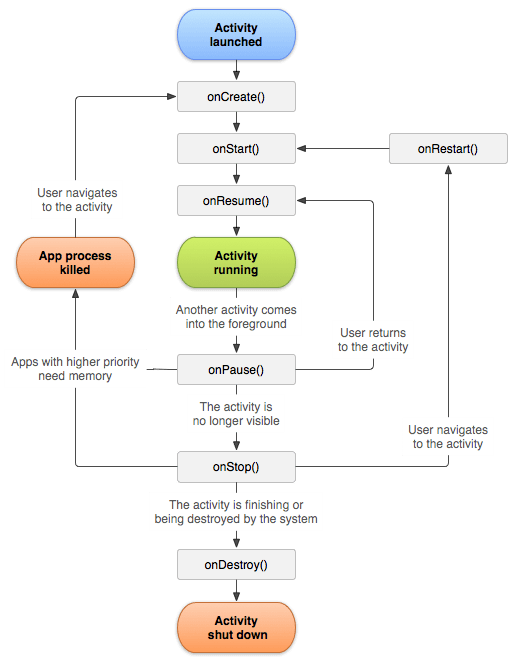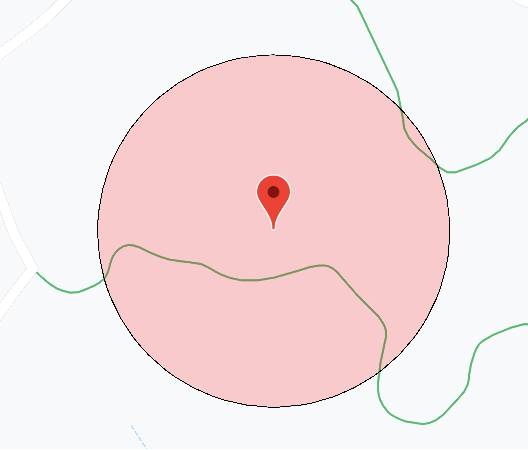Explain activity in android and Activity lifecycle
Explain activity in android and Activity lifecycle
In this post, we are going to discuss ‘Activity’, what is the activity, Activity Lifecycle, Activity Method. let start on discussing.
What is the activity?
Activity is a Java code that supports a screen or UI. In other words, a building block of the user interface is the activity.
Activity class is a pre-defined class in Android and every application which has UI must inherit it to create a window.
Let us create a simple application that displays the current time when you just tap the window. We will dissect the code to understand how the activity works.
An activity is a single, focused thing that the user can do. Almost all activities interact with the user, so the Activity class takes care of creating a window for you in which you can place your UI withsetContentView(View). While activities are often presented to the user as full-screen windows, they can also be used in other ways: as floating windows (via a theme with a R.attr.windowIsFloatingset) or embedded inside of another activity (using ActivityGroup). There are two methods almost all subclasses of Activity will implement
- onCreate(Bundle) is where you initialize your activity. Most importantly, here you will usually call setContentView(int) with a layout resource defining your UI, and using findViewById(int) to retrieve the widgets in that UI that you need to interact with programmatically.
- onPause() is where you deal with the user leaving your activity. Most importantly, any changes made by the user should at this point be committed (usually to the ContentProvider holding the data).
To be of use with Context.startActivity(), all activity classes must have a corresponding <activity>declaration in their package’s AndroidManifest.xml.
Activity Lifecycle
|
Method |
Description |
Killable? |
Next | ||
| onCreate() | Called when the activity is first created. This is where you should do all of your normal static set up: create views, bind data to lists, etc. This method also provides you with a Bundle containing the activity’s previously frozen state, if there was one.
Always followed by onStart(). |
No | onStart() | ||
| onRestart() | Called after your activity has been stopped, prior to it being started again.
Always followed by onStart() |
No | onStart() | ||
| onStart() | Called when the activity is becoming visible to the user.
Followed by onResume() if the activity comes to the foreground, or onStop() if it becomes hidden. |
No | onResume()or onStop() | ||
| onResume() | Called when the activity will start interacting with the user. At this point, your activity is at the top of the activity stack, with user input going to it.
Always followed by onPause(). |
No | onPause() | ||
| onPause() | Called when the system is about to start resuming a previous activity. This is typically used to commit unsaved changes to persistent data, stop animations and other things that may be consuming CPU, etc. Implementations of this method must be very quick because the next activity will not be resumed until this method returns.
Followed by either onResume() if the activity returns back to the front, or onStop() if it becomes invisible to the user. |
Pre-Build.VERSION_
CODES.HONEYCOMB |
onResume()or onStop() |
||
| onStop() | Called when the activity is no longer visible to the user because another activity has been resumed and is covering this one. This may happen either because a new activity is being started, an existing one is being brought in front of this one, or this one is being destroyed.
Followed by either onRestart() if this activity is coming back to interact with the user, oronDestroy() if this activity is going away. |
Yes | onRestart()or onDestroy() |
||
| onDestroy() | The final call you receive before your activity is destroyed. This can happen either because the activity is finishing (someone called finish() on it), or because the system is temporarily destroying this instance of the activity to save space. You can distinguish between these two scenarios with the isFinishing()method. | Yes | nothing | ||




